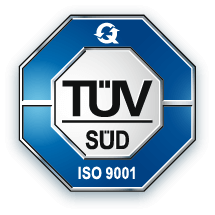Corporate communication
No matter what information an organization has to communicate internally and externally, the technical and cultural process of digitization has produced new formats of audiovisual communication and new types of information products. Under the collective terms "multimedia", "new media" and "digital media", they have found their way into the everyday lives of many companies:
Dialogue systems, explanatory videos, technical instructions using Augmented Reality (AR), product presentations in various formats (video, 360°/VR/AR, 3D, ...), learning and training software, to name just a few examples.
The purposes and characteristics of such publications are diverse – but most of them have one thing in common: the spoken word plays a major role – more precisely: the voice recordings integrated into the medium. Whether a video is complex or inexpensive, short or long, detailed, entertaining, analytical, descriptive, memorable, or otherwise: The speaking voices are instrumental in getting the message through. They shape the impression of quality and professionalism – often in more than one language.
Marketing – Advertising, Public relations (PR), and more
The Internet has revolutionized the distribution of audiovisual media. Any private person, company, authority or organization can publish digital media content – for the general public or limited to certain user groups.
The leading platform for the distribution of user-generated audiovisual content is YouTube, a subsidiary of Google. Since 2018, the Google search engine, among and alongside its search results, has increasingly listed video content which – unsurprisingly – predominantly is hosted on YouTube. With billions of searches conducted each month over YouTube alone, it is considered to be the second largest search engine after Google.
Often, content is published on several platforms simultaneously. The content producers do not incur any, or only low costs for the provision and delivering of their content. For recipients who have a smartphone with internet connection, the permanent availability of digital media is a matter of course.
This has opened up numerous opportunities for the development of new formats and channels for customer communication, advertising, public relations and other special areas in the field of marketing. Thanks to free bandwidth and falling production costs, new ideas and concepts can be developed, tested, and linked to or integrated into already established information products at low cost.
As diverse as the target groups and applications for multimedia productions are, they frequently use voice-over recordings. How much interest, sympathy and trust is inspired in a publication depends not least on the voices that convey the information and messages.
Corporate video
Corporate video is a special field of corporate communications. It serves a large variety of purposes for the internal or external communication of an organization:
- Company and brand promotion;
- Presentation of products and services;
- Staff instruction;
- Explanation and demonstration of the use, features, and benefits of products and technologies;
- Investor relations;
- Testimonials from clients, customers and employees;
- Presentation and documentation of events and fairs;
- Business television and web casting (live and on demand);
- and more.
Education, training and instruction
Video tutorials and how-to videos are among the most popular formats on YouTube. Many high school students, independent of what their schools offer, regularly turn to educational videos to complement their curriculum and prepare for exams.
The E-learning industry generates well above-average growth rates. With ubiquitous availability of multimedia communication it has been able to add the options of M‑learning (Mobile learning) and Microlearning to its portfolio.
Current theories of cognitive processes state that learning works best when it uses the learner's auditory and visual perception channels in parallel. The reason for this is the limitation of the perception channels capacity for taking in and processing complex information. According to the science, using both channels simultaneously supports the learners effort to perceive and understand the learning material, and to store a representation of it in long term memory.
Provided that the teaching language is the learner's native language, the combination of audio narration with relevant visuals is suggested to be the most effective way to achieve good multimedia learning results.
Using audio narration and combining it with still and moving images is of course not the only criteria for high quality learning material. Here are a few more key points and guiding rules that are often pointed out for multimedia learning:
- Use clear language without unnecessary complications.
- Explain specialist vocabulary, if you have to use it.
- Explain visuals using either spoken words (audio), or written words (visual), but do not use both presentations at the same time (less is more).
- Break up complexity into segments.
- Address the learner in a personal, conversational manner, rather than in a formal, authoritative style.
- Use a friendly human voice for your narration, rather than a robotic kind of voice.
- If possible, add interactive examples or tasks to give the learner immediate cause-and-effect experiences.
Culture and entertainment
Multimedia's home game is in the fields of culture and entertainment.
The recording of spoken words dates back to the invention of the phonograph in the 19th century. Predecessors of today's audio books have been around since the 1930s. And from the 1940s onwards spoken word albums on phonographic records brought readings, theatrical drama, comedy, children’s stories, political speeches and more into people’s homes.
Audiobooks came and come in the form of records, audio-cassettes, CDs, downloads, or internet streams. Today some books sell more copies as audiobooks than as print or e-book editions. In 2018, the New York Times added two new categories to its Monthly Best Sellers Lists: "Audio Fiction" and "Audio Nonfiction", thereby recognizing the growing importance of audio books in the marketplace.
Audio and multimedia guides are standard features of art exhibitions and museums worldwide. Most of these institutions offer their guides on rental equipment, which is subject to a charge. The electronic guide provides visitors with access to information that would otherwise only be available in the form of group tours or specialist literature. For the offering institutions an additional source of income opens up.
The texts and voice recordings developed for such guides are subject to the highest quality requirements. They are often enriched by additional, sometimes optional audio elements such as atmospheric music or original sounds related to the exhibits. In addition to greater independence of the visitor and informative value added, an audio guide also offers a potentially more intense experience.
More frequently than audio guides for museums or exhibitions, city guides and travel guides come as smartphone apps. Where human guides are not sufficiently available, or their use would be uneconomical, less frequented regions can present their touristic offerings with an app.
Another industry that has enjoyed above-average growth rates for decades is the gaming industry. Once, primitive sound effects were typical for computer games. In current video games, by contrast, frequently voices, dialogues, sounds and music are used, similar to those used in large productions in the film industry.
Interactive voice response (IVR)
Voice portals use IVR systems to enable telephone communication between a human on one hand, and a call center computer system on the other hand.
If a person calls an organization or company it is often an IVR system that takes the call and asks the caller to answer certain questions, or to choose from a menu presented in the form of voice prompts. The goal is to acquire information for queuing and routing purposes. The information acquired by the IVR system is then made available to the call center agent, who finally answers the call.
The human callers input to the IVR system is done either by using the telephone keypads (DTMF signals), or by using natural language. The latter requires voice recognition capabilities on the side of the IVR system.
The voice prompts that are used by the IVR system can be generated through TextToSpeech (TTS) technology, or through prerecorded messages.
Telephone greetings and on-hold messaging
If a company or organization does not have a complete IVR system, inbound phone calls are often accepted with automated greetings. When the caller is put on hold, the phone system plays music and pre-recorded text messages. Calls outside business hours are typically answered with information about business hours and how to establish contact via a website or an email address. The text and the acoustic quality of these messages affect the impression a company or organization leaves on the caller.
Aspects of multimedia –> read part 1 of our editorial


